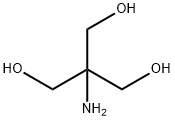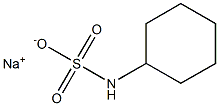4,4'-Diaminodicyclohexyl methane
Synonym(s):4,4′-Diaminodicyclohexylmethane
- CAS NO.:1761-71-3
- Empirical Formula: C13H26N2
- Molecular Weight: 210.36
- MDL number: MFCD00001496
- EINECS: 217-168-8
- SAFETY DATA SHEET (SDS)
- Update Date: 2024-12-18 14:08:57

What is 4,4'-Diaminodicyclohexyl methane ?
Description
4,4'-Diaminodicyclohexyl methane is a sodium salt of a cyclic anhydride that is used as a specific treatment for removing dodecanedioic acid from fatty acids. The reaction solution is stable at pH 4-5 and has a viscosity of less than 1000 cps. It has good stability in the presence of amines and can be used in chromatographic science, including chromatography and gas-liquid chromatography. The UV absorption maxima for the acid complex are 195 nm and 240 nm.
Chemical properties
Beige solidified mass or fragments
The Uses of 4,4'-Diaminodicyclohexyl methane
4,4'-Diaminodicyclohexyl methane be used as organic intermediates and epoxy curing agents.
The Uses of 4,4'-Diaminodicyclohexyl methane
4,4'-Diaminodicyclohexylmethane is used as epoxy curing agents. It is a versatile intermediate to produce leather, rubber products, plastics, dyes, and photo sensitive polymers. It is used in manufacturing diisocyanates and polyamides. It is also used as lubricant additive as and corrosion inhibitor.
Synthesis Reference(s)
Journal of the American Chemical Society, 75, p. 1156, 1953 DOI: 10.1021/ja01101a044
General Description
Yellowish white liquid or brown solid paste.
Air & Water Reactions
Sensitive to decomposition in air and light . Insoluble in water.
Reactivity Profile
4,4'-Diaminodicyclohexyl methane neutralizes acids in weakly exothermic reactions to form salts plus water. May be incompatible with isocyanates, halogenated organics, peroxides, phenols (acidic), epoxides, anhydrides, and acid halides. May generate hydrogen, a flammable gas, in combination with strong reducing agents such as hydrides.
Health Hazard
ACUTE/CHRONIC HAZARDS: 4,4'-Diaminodicyclohexyl methane is corrosive.
Fire Hazard
4,4'-Diaminodicyclohexyl methane is probably combustible.
Flammability and Explosibility
Non flammable
Toxicology
On resorption, predominant clinical signs of intoxication were hyperexcitability, excessive salivation, and convulsions in animals; repeated oral dosing (50 – 100 mg kg -1 d -1 in rats and mice for 10 and 16 d, respectively, 50 mg/kg in dogs for up to 82 weeks) resulted in gastrointestinal hemorrhagic inflammations, nephritis, and fatty changes to the liver. No changes in methemoglobin or in other hematological parameters were induced in cats on repeated doses of 50 and 100 mg kg -1 d -1, given twice per week over 2 months. Several in vitro and in vivo mutagenicity studies gave no evidence of a mutagenic or clastogenic potential.
Properties of 4,4'-Diaminodicyclohexyl methane
| Melting point: | 60-65°C |
| Boiling point: | 330-331°C |
| Density | 0.95 g/mL at 25 °C(lit.) |
| vapor pressure | <0.1 mm Hg ( 38 °C) |
| refractive index | 1.5032 (estimate) |
| Flash point: | >230 °F |
| storage temp. | Keep in dark place,Inert atmosphere,Room temperature |
| solubility | Chloroform (Slightly), Methanol (Slightly) |
| pka | 10.87±0.70(Predicted) |
| form | powder to lump to clear liquid |
| color | White or Colorless to Almost white or Almost colorless |
| Water Solubility | Insoluble (<0.1 g/100 mL) |
| BRN | 2079179 |
| CAS DataBase Reference | 1761-71-3(CAS DataBase Reference) |
| NIST Chemistry Reference | Cyclohexanamine, 4,4'-methylenebis-(1761-71-3) |
| EPA Substance Registry System | 4,4'-Methylenebis(cyclohexylamine) (1761-71-3) |
Safety information for 4,4'-Diaminodicyclohexyl methane
| Signal word | Danger |
| Pictogram(s) |
 Corrosion Corrosives GHS05  Exclamation Mark Irritant GHS07  Health Hazard GHS08  Environment GHS09 |
| GHS Hazard Statements |
H302:Acute toxicity,oral H314:Skin corrosion/irritation H317:Sensitisation, Skin H373:Specific target organ toxicity, repeated exposure H411:Hazardous to the aquatic environment, long-term hazard |
| Precautionary Statement Codes |
P273:Avoid release to the environment. P280:Wear protective gloves/protective clothing/eye protection/face protection. P310:Immediately call a POISON CENTER or doctor/physician. P305+P351+P338:IF IN EYES: Rinse cautiously with water for several minutes. Remove contact lenses, if present and easy to do. Continuerinsing. |
Computed Descriptors for 4,4'-Diaminodicyclohexyl methane
New Products
Tert-butyl bis(2-chloroethyl)carbamate 4-Methylphenylacetic acid N-Boc-D-alaninol N-BOC-D/L-ALANINOL N-octanoyl benzotriazole 3-Morpholino-1-(4-nitrophenyl)-5,6-dihydropyridin- 2(1H)-one Furan-2,5-Dicarboxylic Acid DIETHYL AMINOMALONATE HYDROCHLORIDE 1,1’-CARBONYLDIIMIDAZOLE R-2-BENZYLOXY PROPIONIC ACID 1,1’-CARBONYLDI (1,2-4 TRIAZOLE) N-METHYL INDAZOLE-3-CARBOXYLIC ACID (2-Hydroxyphenyl)acetonitrile 4-Bromopyrazole 5-BROMO-2CYANO PYRIDINE 5,6-Dimethoxyindanone 5-broMo-2-chloro-N-cyclopentylpyriMidin-4-aMine 2-(Cyanocyclohexyl)acetic acid 4-methoxy-3,5-dinitropyridine 1-(4-(aminomethyl)benzyl)urea hydrochloride 2-aminopropyl benzoate hydrochloride diethyl 2-(2-((tertbutoxycarbonyl)amino) ethyl)malonate tert-butyl 4- (ureidomethyl)benzylcarbamate Ethyl-2-chloro((4-methoxyphenyl)hydrazono)acetateRelated products of tetrahydrofuran








You may like
-
 4,4'-Diaminodicyclohexylmethane, mixture of stereoisomers CAS 1761-71-3View Details
4,4'-Diaminodicyclohexylmethane, mixture of stereoisomers CAS 1761-71-3View Details
1761-71-3 -
 4,4'-Methylenebis(cyclohexylamine) (mixture of isomers) CAS 1761-71-3View Details
4,4'-Methylenebis(cyclohexylamine) (mixture of isomers) CAS 1761-71-3View Details
1761-71-3 -
 4,4′-Methylenebis(cyclohexylamine) CAS 1761-71-3View Details
4,4′-Methylenebis(cyclohexylamine) CAS 1761-71-3View Details
1761-71-3 -
 1975-50-4 98%View Details
1975-50-4 98%View Details
1975-50-4 -
 2-HYDROXY BENZYL ALCOHOL 98%View Details
2-HYDROXY BENZYL ALCOHOL 98%View Details
90-01-7 -
 14714-50-2 (2-Hydroxyphenyl)acetonitrile 98+View Details
14714-50-2 (2-Hydroxyphenyl)acetonitrile 98+View Details
14714-50-2 -
 118753-70-1 98+View Details
118753-70-1 98+View Details
118753-70-1 -
 733039-20-8 5-broMo-2-chloro-N-cyclopentylpyriMidin-4-aMine 98+View Details
733039-20-8 5-broMo-2-chloro-N-cyclopentylpyriMidin-4-aMine 98+View Details
733039-20-8